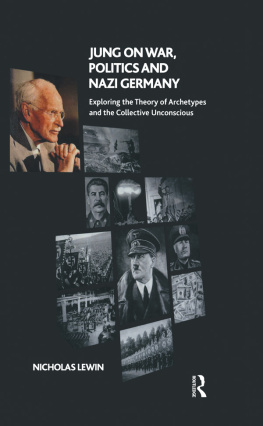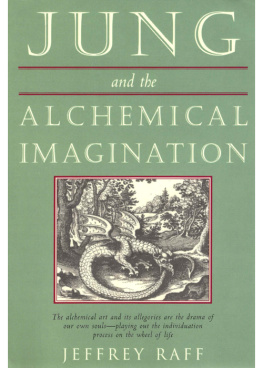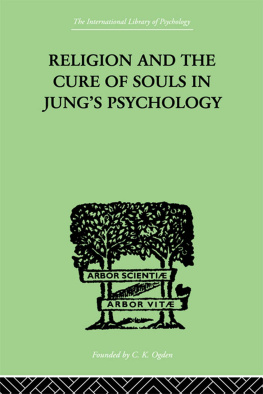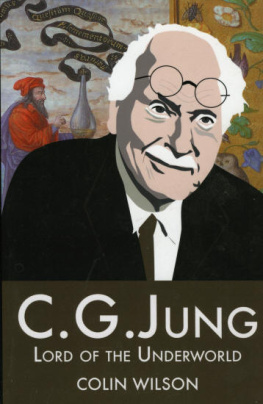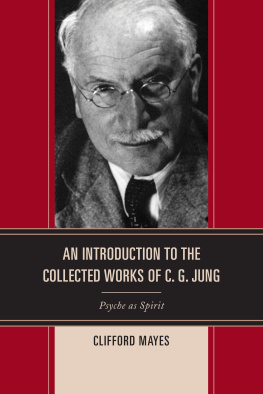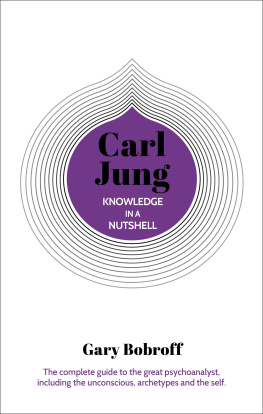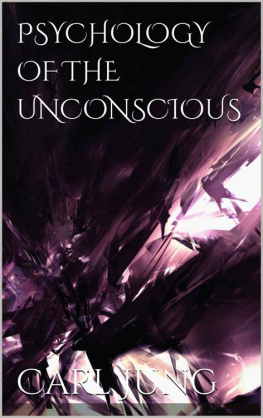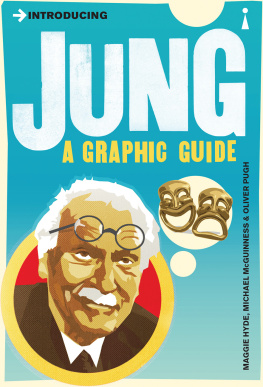BOLLINGEN SERIES XCIX

INTRODUCTION TO
JUNGIAN PSYCHOLOGY
NOTES OF THE SEMINAR ON
ANALYTICAL PSYCHOLOGY
GIVEN IN 1925 BY
C. G. Jung
Original Edition edited by William McGuire
Revised Edition edited by Sonu Shamdasani

Published with the support of the Philemon Foundation
This book is part of the Philemon Series of the Philemon Foundation
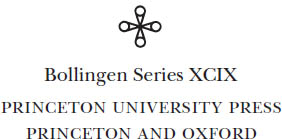
Copyright 1989, 2012 by Princeton University Press.
Introduction and additional notes to the 2012 edition
copyright 2012 by Sonu Shamdasani
Published by Princeton University Press,
41 William St., Princeton, New Jersey 08540
press.princeton.edu
Jacket photograph:
Carl Gustav Jung by Margarethe Fellerer.
Courtesy of The Foundation of the Works of C. G. Jung.
All Rights Reserved
First printing, under the title Analytical Psychology, 1989
First Princeton/Bollingen paperback printing, 1991
Revised edition, with a new introduction and updates by Sonu Shamdasani, 2012
The volumes of seminar notes constitute
number XCIX in Bollingen Series,
sponsored by Bollingen Foundation
The text here edited is that of the original transcript
prepared by Cary F. de Angulo and privately issued in multigraphed
form by members of the class and copyright 1926
by Dr. C. G. Jung, Zurich
Library of Congress Cataloging-in-Publication Data
Jung, C. G. (Carl Gustav), 18751961.
Introduction to Jungian psychology: notes of the seminar on analytical
psychology given in 1925 / by C.G. Jung; original edition edited by William
McGuire; revised edition edited by Sonu Shamdasani.Rev. ed.
p. cm.(Philemon series) (Bollingen series; 99)
Rev. ed. of: Analytical psychology: notes of the seminar given in 1925 / by
C.G. Jung; edited by William McGuire. c1989.
Includes indexes.
ISBN 978-0-691-15205-9 (pbk.: alk. paper) 1. Jungian psychology.
I. McGuire, William, 1917 II. Shamdasani, Sonu, 1962 III. Jung, C. G.
(Carl Gustav), 1875-1961. Analytical psychology. IV. Title.
BF173.J666 2012 150.1954dc23 2011029585
Printed on acidfree paper
Printed in the United States of America
1 3 5 7 9 10 8 6 4 2
CONTENTS
PREFACE TO THE 2012 PHILEMON SERIES EDITION
From a historical perspective, these seminars were in many respects the most important that Jung ever delivered, as they are the only reliable firsthand source in which Jung speaks of the development of his ideas and his self-experimentation, which gave rise to his Red Book, Liber Novus. However, they have never widely received the attention they deserve. In 1989 they were published in the Bollingen Series in an edition edited by William McGuire (19172009). The publication of Liber Novus provides an opportunity for a new presentation of the seminars, as Jungs discussion here now appears in a new light. With this revised Philemon Series edition, a new introduction has been added, together with cross references to the material Jung refers to in Liber Novus, as well as further additional notes with new information. These have been identified by 2012. Mistakes in the 1989 edition have been silently omitted. Further research has shown that the passages from Joan Corries ABC of Jungs Psychology identified as being from this seminar, and reproduced in an addenda, were actually from Jungs seminar in Swanage, England, presented in the same year, and so have been omitted. McGuire assumed that the seminars took place on Mondays between March and July, without a break, and so added dates to each lecture. However, recently recovered notes by Cary Baynes suggest that the seminars took place twice week, so the additional dates have been deleted.
Sonu Shamdasani
See John Beebe, Obituary, William McGuire, Journal of Analytical Psychology 55 (2010): pp. 15758.
In 1988 I assisted with some research in preparation of this volume, which was an instructive experience at that time.
INTRODUCTION
SONU SHAMDASANI
March 24, 1925, Zurich. Cary Baynes noted:
Yesterday began the new order, that is to say, the first of the seminars. These latter like the ancient wars as described in the school text-books, have their immediate and their remote cause, of which the former is luminously set out in Jungs circular letter. It is said that when Miss Corrie received said letter she felt as though her father had died. There was general weeping and wailing and gnashing of teeth among the faithful, but rejoicing from this of the Four Winds. As I have had only two analytical hours since the first of December, it seemed a golden opportunity.
We meet Mondays and Thursdays from 4.30 to 6 P.M. in the rooms at Gemeinde Strasse.hopes to lure Jung for a conference, when told of California replied that the latter was unsuitable because it had a future and that after the site of the conference was chosen within two weeks an apartment house would be built, Vermont on the other hand would be the same 80 years hencethis was thought by me to be a conservative estimate. I think he might have said 800), Aldrich, Mrs. Dunham (Chicago), myself, Miss Hincks and Miss Corrie. In this order we sat around the walls and looked wise.
Jung said he would begin with a historical review of analytical psychology, and that we would then put in whatever questions we might have as we did at Cornwall, and he would select the ones suitable for discussion.
Cary Bayness vivid account of the good-humored commencement of these seminars breaks off here. The audience, clearly, had no inkling of what Jung was about to present. But before turning to this, we need to look at Jungs situation in 1925.
JUNG IN 1925
In 1921, Psychological Types had appeared, to widespread acclaim. The English edition appeared in 1923 and received many laudatory reviews. In a two-page spread in the New York Times Book Review, Mark Isham concluded: This volume is drastically serious, positive, didactic, classic, and yet more than stimulating. It is energizing, liberating and recreative. The author shows an amazingly sympathetic knowledge of the introvert of the thinking type, and hardly less for the other types.... Jung has revealed the inner kingdom of the soul marvelously well and has made the signal discovery of the value of phantasy. His book has a manifold reach and grasp, and many reviews with quite different subject matter could be written about it. and in the commencement of the building of his tower at Bollingen, on the upper shores of Lake Zurich.
The genesis of the work may be briefly stated. In the winter of 1913, Jung deliberately gave free rein to his fantasy thinking and carefully noted what ensued. He later called this process active imagination. He wrote down these fantasies in the Black Books. These are not personal diaries, but rather the records of a self-experimentation. The dialogues that form these active imaginations can be regarded as a form of thinking in a dramatic form.
When the First World War broke out, Jung considered that a number of his fantasies were precognitions of this event. This led him to compose the first draft manuscript of Liber Novus, which consisted in a transcription of the main fantasies from the Black Books, together with a layer of interpretive commentaries and lyrical elaboration. Here, Jung attempted to derive general psychological principles from the fantasies, as well as to understand to what extent the events portrayed in the fantasies presented, in a symbolic formdevelopments that were to occur in the world. The work, though never published during Jungs lifetime, was intended for publication. The overall theme of the work is how Jung refound his soul and overcame the contemporary malaise of spiritual alienation. This is ultimately achieved through enabling the rebirth of a new image of God in his soul and developing a new worldview in the form of a psychological and theological cosmology.
Next page

